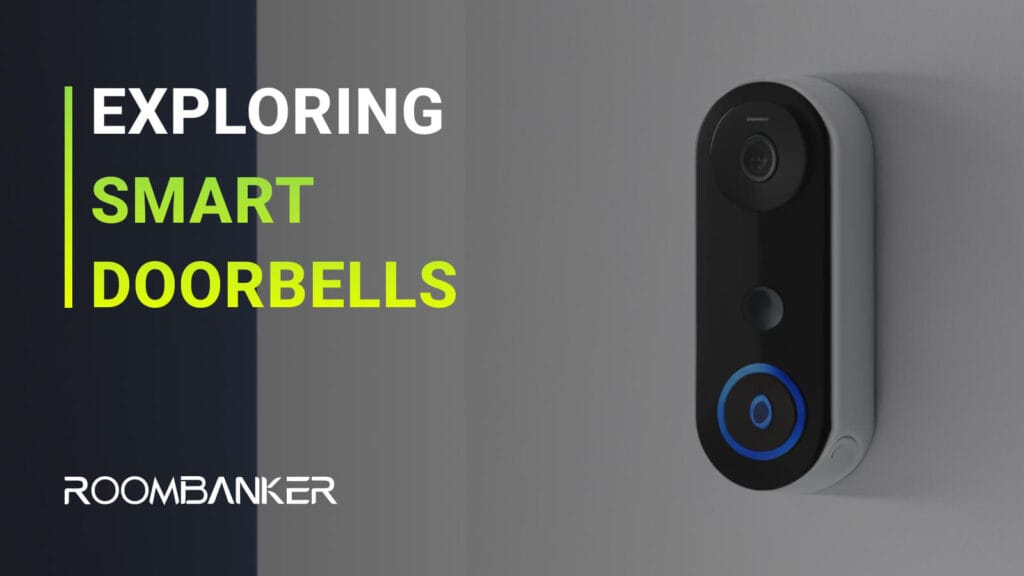
RBF Technology
Connecting Your Space in RBF Way

What is RBF Technology?
RBF, developed by Roombanker, is an exceptional two-way radio protocol that delivers outstanding performance in long-range capabilities, low power consumption, and high-security data transmission. RBF provides a reliable solution for seamless interaction between the Home Security Hub and wireless peripherals for the whole professional wireless security alarm system.
Kilometer-level Two-way Wireless Communication
The RBF protocol enables the extensive range of up to 3500m, effortlessly covering various scenarios such as apartments, villas, retail stores, and more.
Vast Coverage
The RBF protocol is built upon the Sub-1GHz spectrum and leverages advanced FSK/DSSS modulation technology to achieve wireless communication with an impressive range of up to 3500 meters.

Omnidirectional Antenna
The balanced signal strength in all directions provides wider coverage and can resist signal loss caused by obstacles in the transmission path, effortlessly covering complex scenarios.

Two-way Wireless Communication
The RBF protocol enables bi-directional data transmission between the Home Security Hub and various peripherals, facilitating more complex control requirements while ensuring reliable real-time data interaction.

Automatic Signal Adjustment
Devices with RBF technology can adjust RF transmission power based on signal strength, resulting in lower power consumption, extended battery life, and reduced frequency of battery replacement.

Stable, Secure and Solid Data Transmission
TDMA (Time Division Multiple Access Technology)
In RBF wireless system, peripherals’ working time and wake-up intervals follow strict rules. Peripherals are allowed to alarm only during designated time slots for reporting. All devices synchronize their reporting activities to their respective time slots, thereby minimizing internal system interference.

LBT (Listen Before Talk)
When multiple alarm events are triggered simultaneously, each peripheral will activates the LBT mechanism to checks if the current channel is busy, and either hops to a different frequency or waits for the channel to become idle before transmitting the signal, preventing channel congestion and data loss.

FHSS (Frequency-Hopping Spread Spectrum)
Anti-Jamming: works when meeting continuous interference from an intruder using signals within the same frequency range.

AES-CCM Encryption
The RBF protocol employs AES-CCM data encryption in conjunction with FHSS, rendering the intrusion attempts of attackers futile in terms of interference, signal interception, and replication.

Low Power Consumption
All RBF devices have undergone CE/RED low-power certification tests, with standby power consumption below 2 uA. Just need two AA batteries for a standby lifespan of up to 2 years, significantly reducing maintenance frequency.

OTA Multicast
RBF devices support OTA firmware updates, which features fast transmission speeds and high throughput, allowing for simultaneous firmware transmission and updates across multiple devices.

Multi-frequency-bands for High Regional Adaptability
Currently, there are three frequency band options for RBF protocol: 915/868/433 MHz. These options cover over 90% of countries and regions worldwide, making it suitable for global distribution.

RBF Performance Comparison with Zigbee and LoRa
Compared to ZigBee and LoRa standard protocols, RBF protocol offers long-distance, high-security, and high-speed data transmission while maintaining lower power consumption, making it a perfect fit for intrusion alarm security and smart home applications in residential and small-to-medium-sized commercial settings.
| RBF | Zigbee | LoRa | |
|---|---|---|---|
| Modulation | DSSS/FSK | DSSS | CSS |
| Standard | IEEE802.15.4 Like MAC | IEEE802.15.4 MAC | LoRaWAN |
| Spectrum | Sub-GHz | 2.4GHz | Sub-GHz |
| Speed | 2 kbps-1 Mbps | 250 kpbs | 0.3-50 kbps |
| Distance | 3.5 km | 0.1 km | 1 km - 10 km |
| Device Access | Random Access + TDMA | Random Access | FDMA Random Access |
| Topology | Star | Mesh | Star |
| Power Consumption | Standby Power < 2uA | Standby Power Approx. 2uA | Standby Power Approx. 2uA |
| Encryption | AES-CCM + Random Number Key | AES-CCM | AES-128 |
| OTA | Support (Multicast, Background Updates) | Support | Support |
| Pros & Cons | Real-time Downlink Data Transmission in Low-power Mode: 2-second downlink broadcast window with power consumption less than 15uA; FHSS Frequency Hopping: anti-interference and maximize spectrum utilization; TDMA: improve channel utilization; OTA Multicast & Background Transmission: easier and efficient for multi-device firmware updates. | Rich ecosystem; Shorter Transmission Distance: suitable for in-home applications; Extensive Protocol Stack: require more resources and higher costs. | Large Capacity: a gateway chipset has 8 independent channels allowing for FDMA, accommodating extensive connected devices. Spread Spectrum Modulation: high sensitivity, excellent signal-to-noise ratio, good tolerance to frequency deviations or variations in crystal oscillators, and fine adaptability to environmental conditions. |





